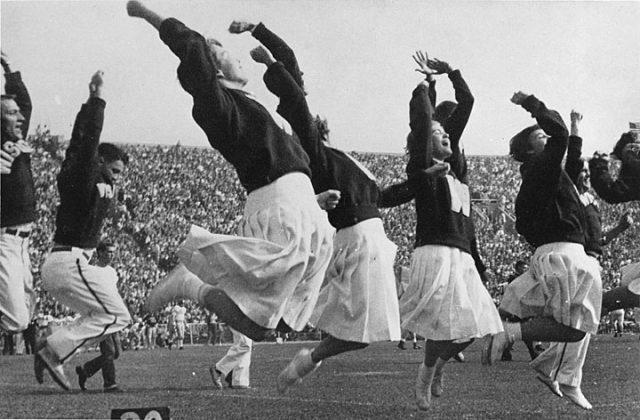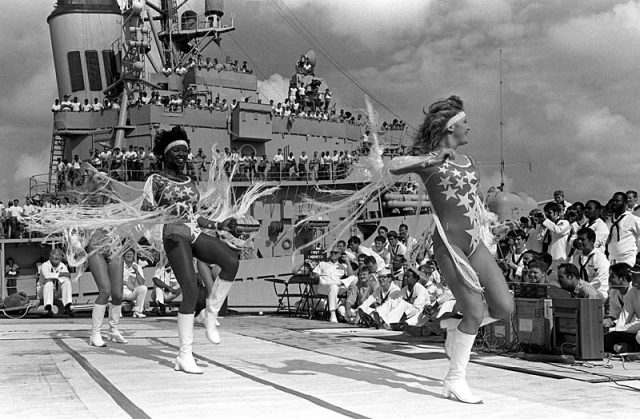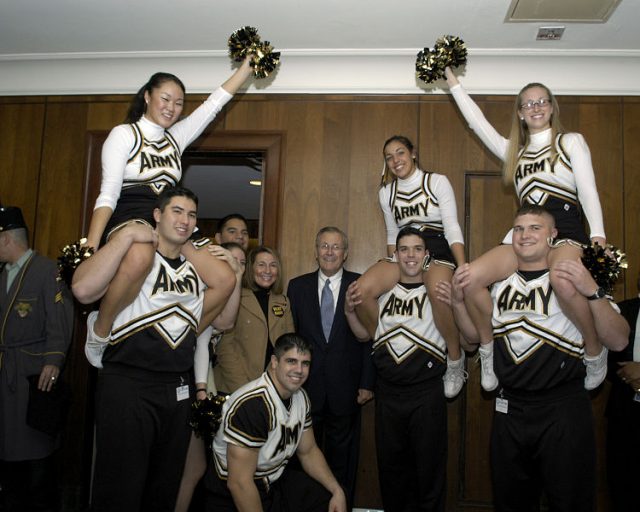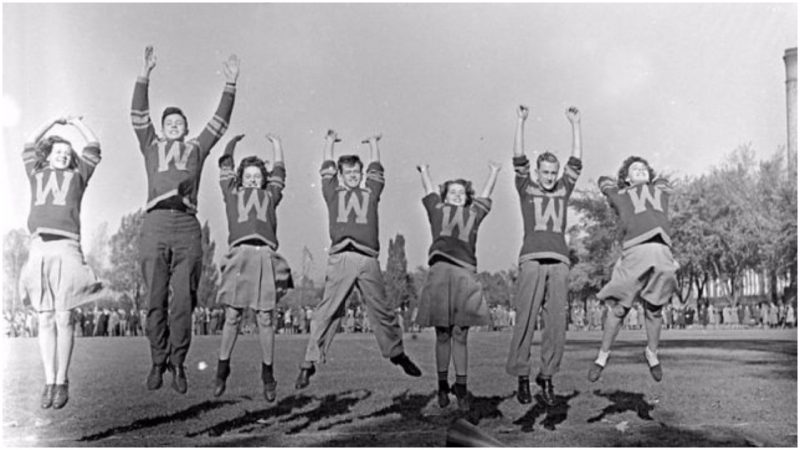Cheerleading distinguishes American football from all other sports. Not that other sports lack the assistance of organized supportive groups which have their unique stories, but rarely do these groups perform such a show during the match, requiring as much skills and talent as the team they are supporting. Today cheerleaders are predominantly female but, believe it or not, women weren’t allowed to join cheerleading teams until 1923.
The roots of cheerleading can be traced back 1883, when a trend of united cheering and chanting at sports games was spreading. However, it was at Princeton University that the first official cheer was performed in 1884. Students from the university formed an all-male pep club and got the idea of cheering the university team and rousing the audience, so they came up with a catchy cheer:
Ray, Ray, Ray!
Tiger, Tiger, Tiger!
Sis, Sis, Sis!
Boom, Boom, Boom
Aaaaah! Princeton, Princeton, Princeton!

A few years later, Princeton graduate Thomas Peebles took the trend to the University of Minnesota and inspired Johnny Campbell, a student of medicine, to assemble an all men (again) group to support the university team at a time when their spirits were as low as their points.
It was during a game on November 2, 1889, that Johnny grabbed a megaphone and revived the team, spurring them to victory with the first organized cheer:
“Rah, Rah, Rah!
Ski-U-Mah!
Hoo-Rah! Hoo-Rah!
Varsity! Varsity!
Minn-e-so-tah!
And ever since that November, Campbell is recognized as the world’s first official cheerleader.
Cheerleading spread among young men at the university like a fever. It became prestigious to be a cheerleader. There was even a cheer fraternity, Gamma Sigma, created in 1903 at the University of Minnesota. It had six members who were previously part of the “Yell Squad.” In the following decade, the cheerleading trend spread across the universities in the United States. Even future Presidents Dwight Eisenhower and Franklin Roosevelt were members of cheer groups when they were in college.

And it wasn’t until 1923 that women were allowed to become cheerleaders. When women joined the all-male cheerleaders groups, they started wearing a recognizable outfit that consisted of the varsity sweaters and ankle-length skirts. With the outbreak of World War II, many young men chose to skip cheerleading and joined the military. Girls now dominated cheerleading, and they took it to another level. Besides the catchy yelling, they included dance, gymnastics, and showy stunts. And in the early 1930s paper pom-poms were introduced, which started being manufactured from vinyl in 1965.
Cheerleading was evolving, from a sideline support at football games to a competitive pursuit in of itself. So, in 1948, a former Southern Methodist University cheerleader, Lawrence “Herkie” Herkimer, established the National Cheerleaders Association (NCA). The first documented cheer clinic took place in Huntsville, Texas, in 1950, and 52 girls participated. The NCA is still one of the leading cheerleading organizations in the U.S. with hundreds of camps and competitions going on all year round.

Herkie invented many of the elements by which cheerleading is recognizable today. He created the Cheerleader & Danz Team company for manufacturing cheerleaders uniforms. As for the choreography, he was the one who came up with the jump which is now called the “Herkie,” and the spirit stick. Due to his contribution, Herkimer is known as “the Godfather of cheerleading.”
As cheerleading evolved, there was not a college nor a high school that didn’t have cheerleaders by 1960. The sport got serious and by the end of the 1960s professional cheerleading was introduced under the National Football League. The leaders at the time were the Dallas Cowboys Cheerleaders, who debuted in the 1972-73 season but were mostly remembered for their performance in Super Bowl X in 1976.

“The Top Ten College Cheerleading Squads” and “Cheerleader All America” were some of the most popular competitions for cheerleaders, where the awards were distributed by the World Cheerleading Association (WCA), then known as the International Cheerleading Foundation. In 1997, cheerleading was recognized as an independent sport, and in 1999 it was given official approval.
Here is another story from us: Fascinating & unique graduation traditions around the world
Although it started as an all-male, prestigious club, today 97 percent of professional cheerleaders are female. However, in college, men participate in the sport up to 50 percent. It is certainly interesting how men yelling a catchy cheer evolved into mainly female competitive gymnastics and an officially recognized sport.
